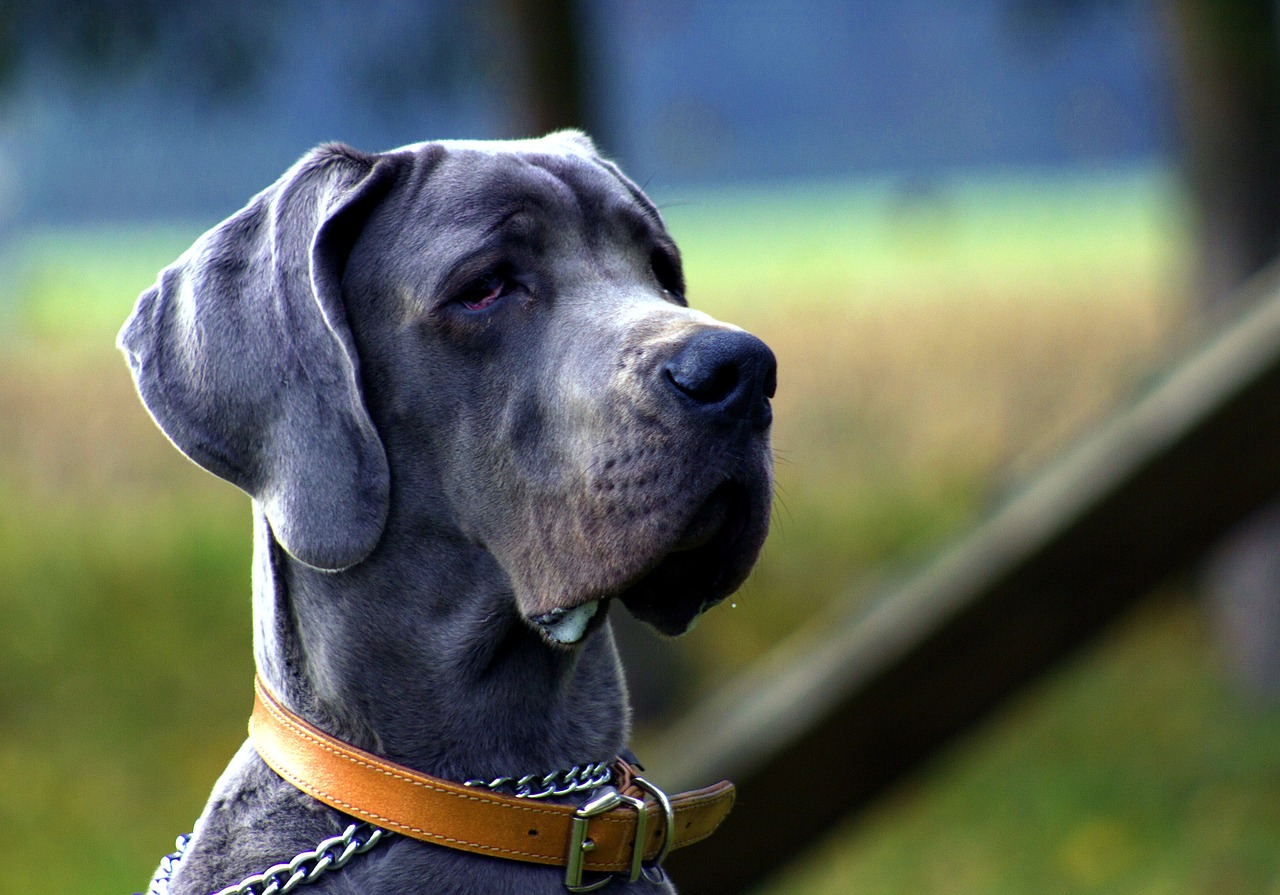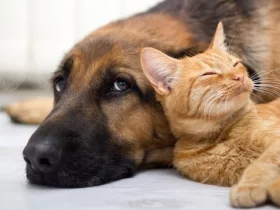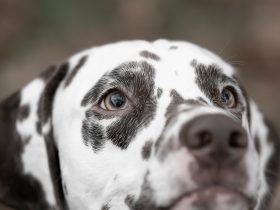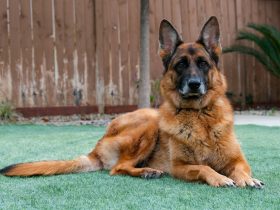Aging in dogs, as in human beings, is composed of gradual and constant biological changes. The aging process begins when the dog is born and continues until his death. While the dog is always aging, the process becomes more noticeable after the dog reaches 6 or 7 years of age. Now, this doesn’t necessarily mean that a 6- or 7-year-old dog is decrepit or senile; far from it, many dogs this age are very alert and active. But age is upon them. The 6- or 7-year-old dog may be compared to a 40-year-old person: both have telltale signs of age.
Most dogs manage to remain in good health up to the time they are 6 or 7 years old, even beyond that. They still have good eyesight, hearing, hair, teeth and muscular coordination. But when they go past 6 or 7 years, the aging process makes heavy inroads.
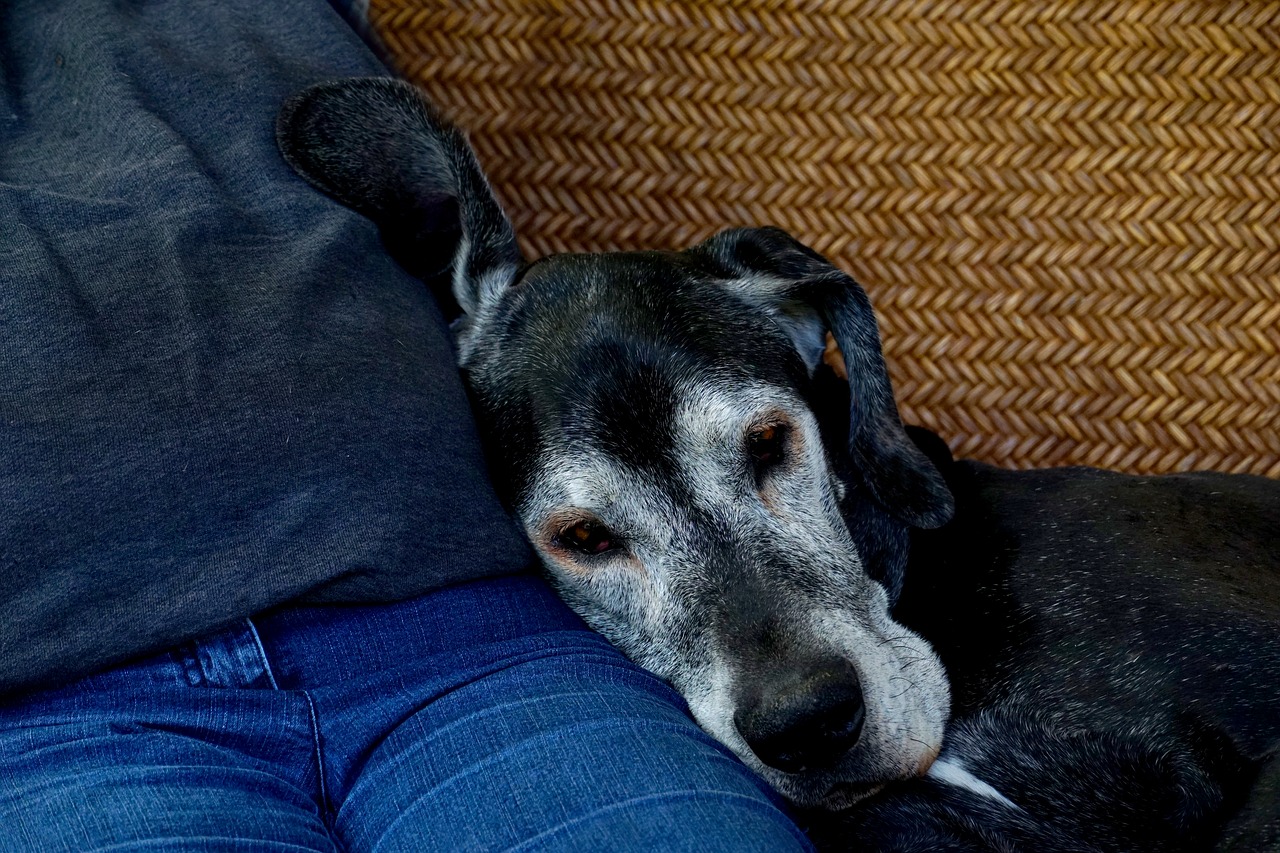
With reasonable care, your dog can live to be 12 years old. Many dogs live to be 14 to 17 years of age. Some live to be 25! But these very old dogs or canine centenarians are usually the exceptions—and they are usually small or toy dogs. There is a definite relationship between the size of the dog and longevity. In general, the smaller breeds mature earlier and live longer than do the large breeds. And another actuarial fact on canine longevity is that males outlive females. This is the reverse of human beings. For the sake of comparison, a 17-year-old dog is equivalent to a 100-year-old person.
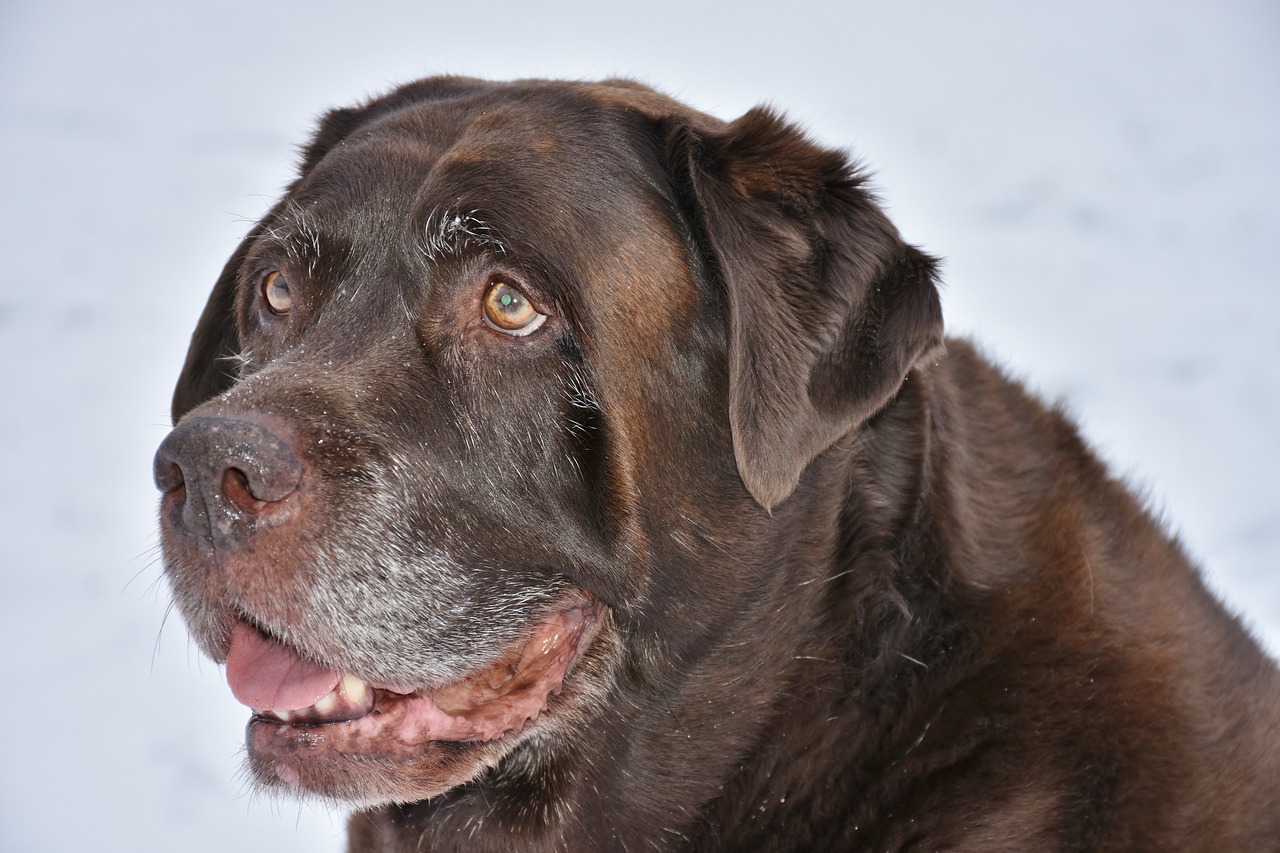
A few years ago, the Gaines Dog Research Center, New York, conducted a survey on the longevity of dogs. The Center was mostly interested in “canine centenarians”—dogs 17 years old or over. Five hundred dog owners with dogs 17 or over were queried as to what they contributed the dog’s longevity. The consensus of opinion was that good care, a sound diet, plenty of affection and a congenial environment were the most important factors contributing to longevity. Of course, genetic and freedom-from disease factors contribute to longevity, but even these must be supplemented with good care.
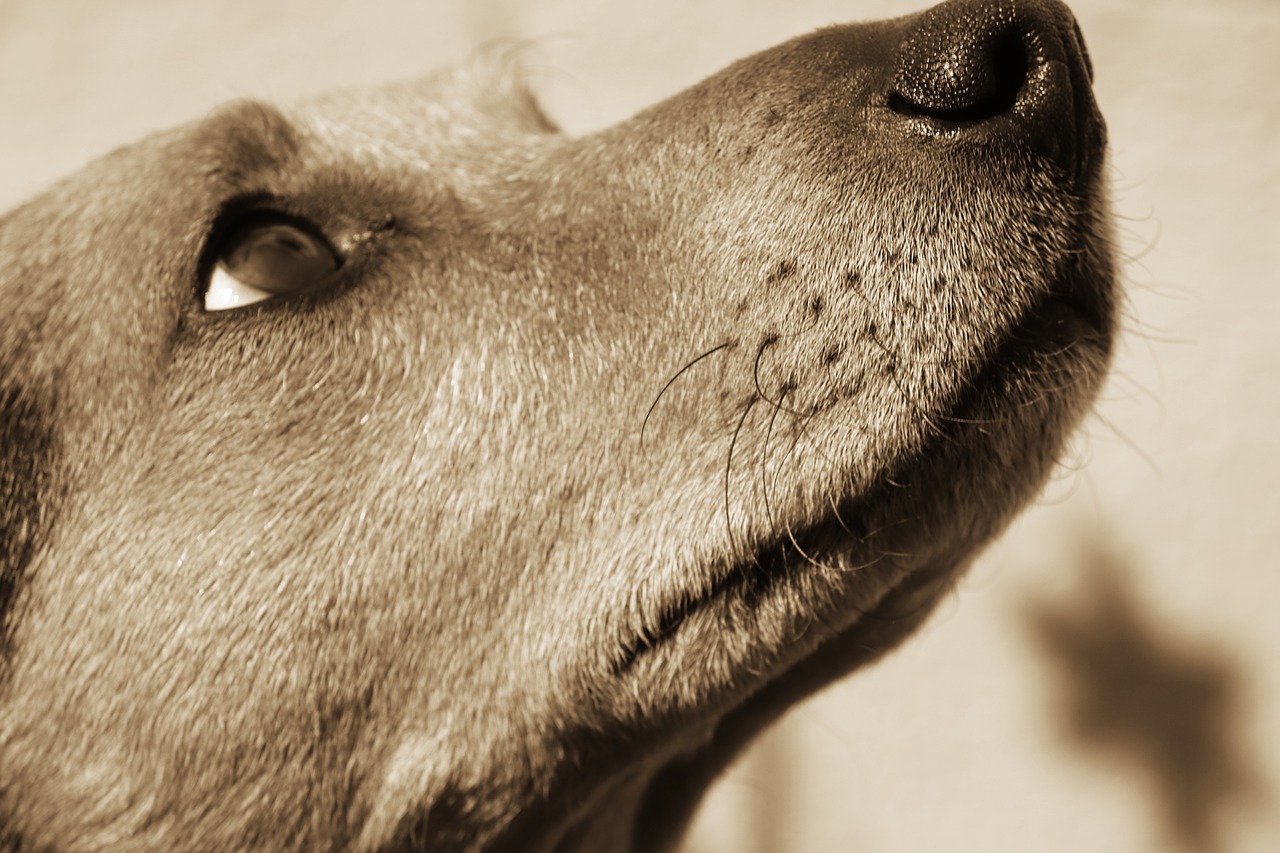
The Gaines survey dealt only with dogs 17 years of age and over, but many of the conclusions drawn from it can be applied to dogs 6 years and up.
Physiological changes in the aging dog
When the dog gets beyond 6 or 7 years of age, he begins to show definite physiological changes. He may be in good flesh, with a stout appearance, or he may be emaciated, depending on how he’s endured the years. His hair will be dryer and sparse, especially on the abdomen; resulting from a reduction in the skin gland activity. The hair around the old dog’s muzzle turns white or gray. Skin tumors make their appearance and the skin thickens with age. Calluses are common in old dogs and form on the hocks, elbows and other bony parts. The old bitch’s breasts sag or hang down and the nipples become wrinkled and enlarged. Deafness and blindness come to the old dog. Cataracts are most always present in dogs over 10 years of age. Finally, the old dog’s teeth are worn down, broken or riddled with cavities.
There is a generalized loss of muscle tone in the aging dog, with accompanying muscular atrophy. The respiratory, cardiovascular, digestive and urogenital systems all undergo changes and deterioration. The old dog has less resistance to disease or stress than younger animals. And he doesn’t adapt too well to changes in his routine or environment.
Changes in dog’s behavior
Like the aging human being, the old dog becomes “set in his ways.” He gets crotchety, grumpy, even irritable at times. In some instances, he may even be snappy. Any change in his routine will upset him. He’s simply used to doing things a certain way for a long time. In brief, he’s getting old. Humor him as much as you can.
The old dog can be very jealous and possessive. After all, he’s been the center of your pet world for years. He’ll resent children and other animals, particularly when you show them affection. Keep up the old dog’s morale by letting him know that he is still important. And caution children and visitors about the old dog’s feelings, disposition or infirmities.
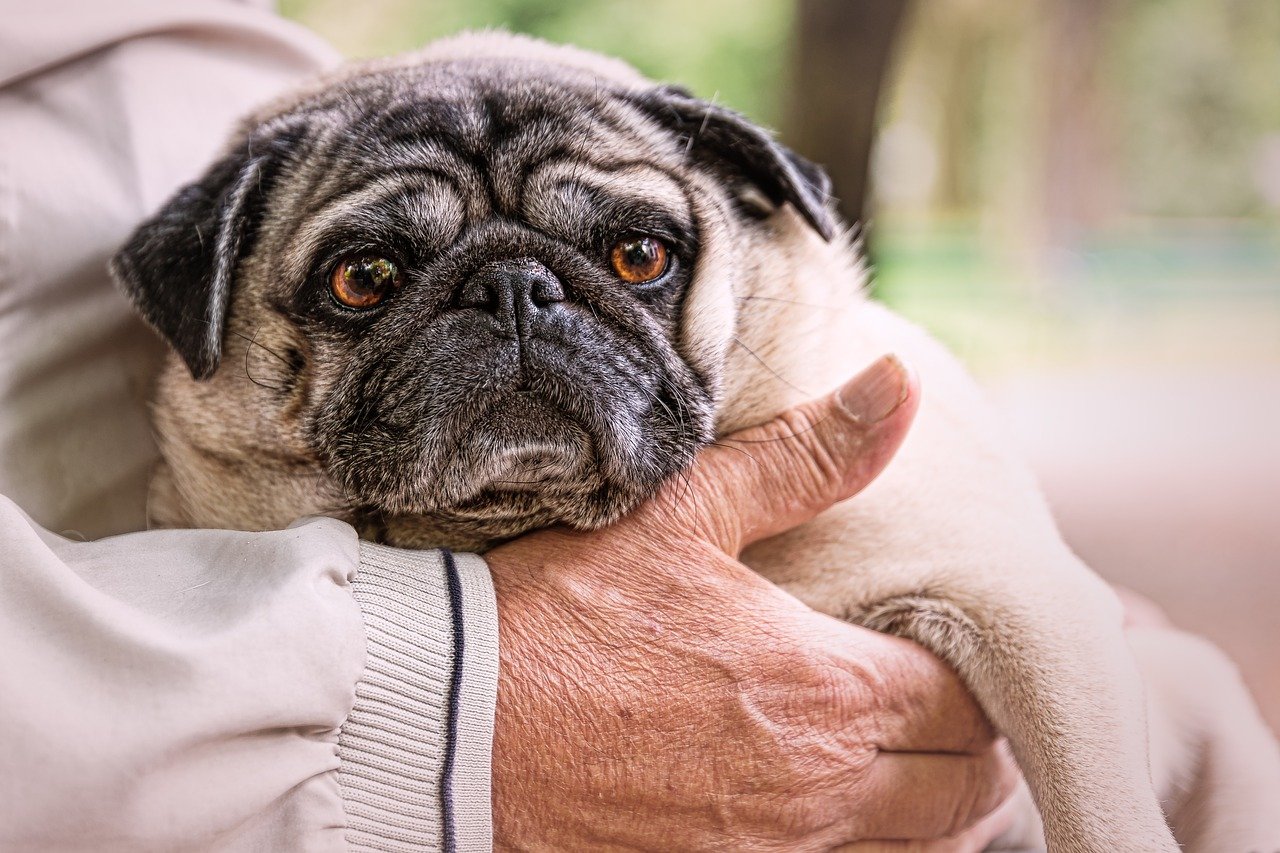
Many dog owners get a young pup while they still have an old dog. As to the advisability of this, we don’t have any opinion one way or the other. The decision is up to you. But we do think you should handle such a situation with care and tact. There’s no doubt about it, the old dog is going to be very jealous of the new pup. Keep them separated—especially at mealtimes—until you see that there will not be any fights. Above all, keep reassuring the old dog and let him know that he’s still the number one dog. The pup will have plenty of time to get his share of praise and affection when the old dog is gone.
General care of the old dog
The old dog is slowing down, so do everything in moderation.
Exercise
Old dogs tire very easily. Adjust the walks and exercise periods to the old dog’s pace. Don’t overdo them—strenuous play or long hikes may overtax the old dog’s heart. If lie doesn’t want to walk or exercise, don’t force him. And if he insists on sleeping, let him; he’s earned his place in the sun.
Feeding
The caloric requirements of the old dog are considerably less than those of the younger dog. This reduction is due to the lessening of activity and a lowering of the metabolic rate. Avoid overfeeding. Obesity in the old dog is just as dangerous as it is in aging human beings. You will definitely shorten your dog’s life if you allow him to put on excess weight. If your dog tends toward overweight, cut down on his daily intake of food, but not the quality. The old dog still needs a complete and balanced diet, albeit in reduced quantities.
You can go right on feeding the old dog a high-quality prepared dog meal and meat ration. The old dog still needs moderate amounts of protein and carbohydrates. But his fat intake should be kept to a low level, about 4 or 5 percent of the total daily ration. He’ll need vitamins and minerals, too. If the veterinarian puts the old dog on a special diet, stick to this diet. The old dog’s life may depend on it. The best feeding policy is to divide the total daily ration into two parts and feed one in the morning and one at night. This will keep him more contented.
Grooming
The old dog will probably need more attention as far as grooming is concerned. Brush him daily, oil his skin and keep him free from fleas, lice and ticks. Remember, he can’t stand much stress and an infestation of parasites will put him under stress. Avoid bathing him, except when absolutely necessary and then only on very warm days. If he has a doggy odor, use one of the spray cleaners and deodorizers on him. Watch his nails and trim them when they get too long. If his eyes weep, wash them with boric-acid solution and soothe them with an eye ointment.
Teeth
Tooth decay can cause misery for the old dog. Have the veterinarian remove any decayed teeth. Avoid giving the old dog big bones or hard toys that may break his teeth. Accumulations of tartar should be removed from the teeth. This is best done by the veterinarian.
Ailments of old age in dogs
Rheumatism
Rheumatism usually shows up when the dog reaches 10 or 11 years of age. Stiff joints, difficult movement and irritability are the most common symptoms. Your veterinarian can prescribe medication to help relieve rheumatism. You can help the old dog by giving him a warm and dry place to live and sleep. Keep him out of drafts and dampness.
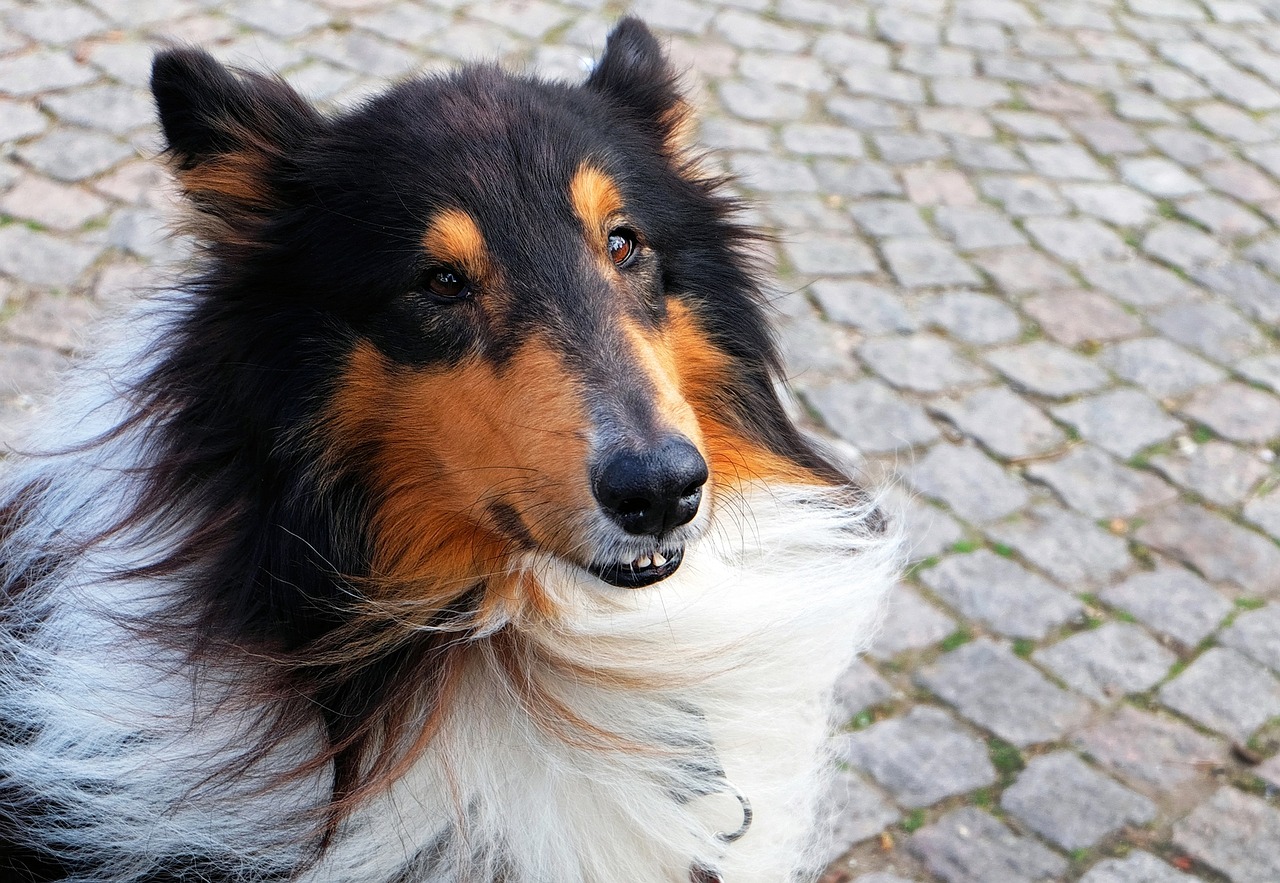
Otitis
Old dogs frequently suffer from chronic otitis or inflammation of the external, internal and middle ear. The condition can be very painful and will make the dog very irritable. He may refuse to eat. Otitis is more often seen in those dogs with long or pendulous ears, such as the Dachshund, Cocker Spaniel and Setter. Upon close examination, the ear will be inflamed and there may be a discharge. Don’t try to treat this condition, take the old dog to the veterinarian. Surgery is very often necessary.
Deafness
Otitis may lead to deafness. But deafness is caused by other factors, such as disease and injury. If—after you’ve had any ear infections or injuries taken care of—the old dog has difficulty in hearing, you can contribute the loss of hearing to advancing old age. There isn’t much can be done for senile deafness. In rare cases, deaf dogs have been provided with hearing aids. But these are costly and not really necessary.
Once you know the old dog is deaf, you’ll have to make some adjustments in the daily routine. Since he can’t hear, the old dog will be easily surprised when napping or lying down. Move quietly and try not to startle him. Caution children and strangers about the dog being deaf. He may snap or bite when startled. Also, take care that he doesn’t get out onto the street where his impaired hearing will expose him to danger.
Blindness
Blindness is common in the very old dog. Cataracts are the main cause of blindness. They usually follow a chronic course. Cataracts may be seen in the form of cloudy spots resembling the solid white of an egg, and are visible through the pupil or hole in the center of the eyeball. Cataracts can be removed by surgery and a major portion of sight restored.
It may take you some time to catch on to the fact that your old dog is blind. A blind dog can move about amazingly well, particularly in familiar surroundings. He can move without bumping into chairs or tables because he relies on his scent. Most dogs retain a good sense of scent until the end. Outdoors, however, the blind dog gets into trouble. Never let him out of the yard alone. Keep him on the leash when you walk him.
Nephritis
Some degree of chronic nephritis or inflammation of the kidney is present in most old dogs. Nephritis may range from the non-uremic type, in which the old dog drinks a lot of water and frequently urinates, to the more dangerous uremic type. Both types of nephritis require veterinary attention. The dog with chronic nephritis will probably have to be on a special diet for the rest of his life.
Other ailments
Prostatitis, pyometra and ascites—ailments of the old dog — while these conditions are usually found in old dogs, they may be present as symptoms of disease in younger dogs.
Boarding the old dog
Our advice is to board the old dog as few times as possible. Old dogs become depressed and refuse to eat when placed in strange surroundings. Veterinarians and boarding kennel operators are not too happy to take an old dog for boarding. Their reluctance is understandable: an old dog that refuses to eat and pines away to the extent of emaciation, isn’t good for reputations. Too many owners have accused veterinarians and boarding kennel operators of starving and mistreating their old dogs.
The writer has had considerable experience with this situation. As manager of the Bide-A-Wee Home for Animals in New York, he supervised a special boarding and “pension” section. Not too many old dogs were boarded, but the “pension” kennels had as many as fifty old-timers on a daily basis. It took all of our ingenuity and dog know-how to get these old “pensioners” to eat. None of them was ill; they were just getting old—many of them 10 years or more. We had to resort to special foods, fancy cooking, intravenous feeding—even having the old dogs fed by women. Many dogs have been fed by women all their lives and will refuse to eat when fed by men.
It may be asked at this point why these old dogs weren’t put to sleep instead of being boarded out or pensioned off. Well, there were some good reasons. First, Bide-A-Wee has the policy of never destroying dogs unless incurably ill. Second, many of the owners of these old dogs were forced by housing laws or family circumstances to give up their old dogs.
They just couldn’t bring themselves around to having the old dogs put to sleep. So, in lieu of euthanasia, these people were happy to pay a yearly fee to keep their old dogs at Bide-A-Wee where they got excellent care and medical attention.
And this brings us up to the question of euthanasia, or putting the old dog to sleep. Should you have the dog put to sleep when he gets too old? The question is one with which the writer grappled almost every day of his six years as manager of Bide-A-Wee. There are too many facets to the question for a pat answer. The decision is yours alone—no veterinarian will tell you that the dog must be put to sleep.
Why not look at it this way: if the old dog is in fair health for his age and it is possible for you to keep him, there is no need for euthanasia. But if he is infirm and seriously ill, possibly in pain and misery, then perhaps the kind thing to do would be to have him put to sleep.
We are aware of the controversial nature of euthanasia. But we can only point to Nature’s way of taking care of the situation. In the wild dog packs (and with other animals), the old are never allowed to go on. When an old dog becomes infirm and goes down, he is killed by the rest of the pac k. And while this may sound like a specious argument, certainly the old dog doesn’t expect more than to be put away when he becomes decrepit and infirm. But—as we said before—you must make the choice.
If you do decide to have the old dog put to sleep, have the veterinarian administer euthanasia. We can assure you from long experience that the dog will slip peacefully into a long sleep and never wake up.

